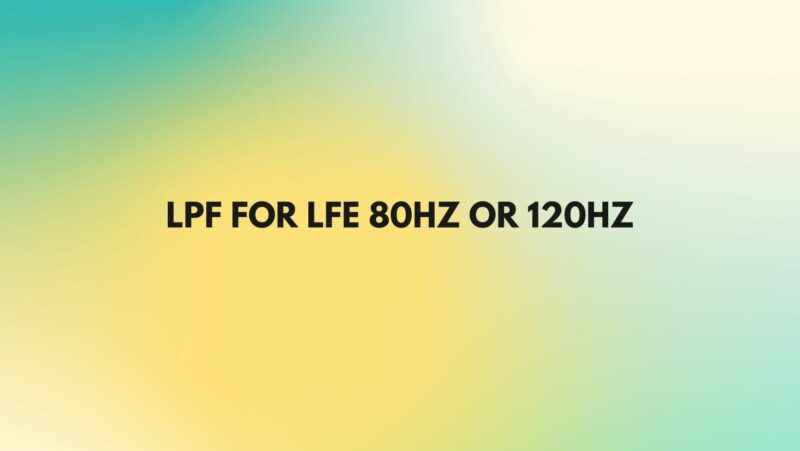In the world of audio and home theater, discussions often revolve around the use of LPF (Low-Pass Filter) settings for the LFE (Low-Frequency Effects) channel. This debate typically centers on whether to set the LPF for LFE to 80Hz or 120Hz. In this comprehensive article, we will explore the purpose of the LFE channel, the significance of LPF settings, and the considerations for choosing between 80Hz and 120Hz for optimal audio performance in various contexts.
Understanding the LFE Channel
The LFE (Low-Frequency Effects) channel is a dedicated audio channel found in surround sound systems. It is designed to reproduce low-frequency audio content, often associated with deep bass effects such as explosions, earthquakes, and rumbling. The LFE channel provides a powerful and immersive audio experience in movies, video games, and music mixes, enhancing the impact and realism of sound effects.
The Role of LPF in LFE
The LPF (Low-Pass Filter) for LFE serves as a critical control for managing the frequencies sent to the subwoofer or LFE channel. This filter determines the upper frequency limit at which audio content is redirected from the main speakers to the subwoofer or LFE channel. It is essential for optimizing the bass performance in a home theater or audio system.
LPF Settings: 80Hz or 120Hz?
The choice between setting the LPF for LFE at 80Hz or 120Hz is a matter of audio preference, room acoustics, and equipment capabilities. Here’s a closer look at both options:
- LPF for LFE at 80Hz:
- Benefits:
- Balanced Sound: An 80Hz LPF setting is a common choice because it aligns with the recommended crossover point for most home theater systems. This setting ensures a smooth transition between the main speakers and the subwoofer, minimizing phase issues and creating a cohesive soundstage.
- Less Localization: Setting the LPF at 80Hz helps prevent the subwoofer from producing directional sound, reducing the chance of localizing the source of bass frequencies to the subwoofer. This can lead to a more immersive listening experience.
- Room Acoustics: In rooms with good acoustics and low-frequency response, an 80Hz LPF setting can often produce satisfying deep bass without overpowering the room.
- Considerations:
- Subwoofer Capability: The effectiveness of an 80Hz LPF setting may depend on the capabilities of your subwoofer. High-quality, powerful subwoofers are better suited to handle lower frequencies effectively.
- Benefits:
- LPF for LFE at 120Hz:
- Benefits:
- Extended Low-End: Setting the LPF at 120Hz allows the subwoofer to reproduce a broader range of frequencies, including some mid-bass frequencies. This can be advantageous if you want more bass impact in the mid-bass range.
- Room Compensation: In rooms with challenging acoustics or uneven bass response, a 120Hz LPF setting can help compensate for room-related bass issues by directing more content to the subwoofer.
- Considerations:
- Localization: A 120Hz LPF setting may lead to more noticeable localization of the subwoofer, potentially affecting the immersion of the audio experience.
- Speaker Capabilities: The choice of LPF setting should also consider the capabilities of your main speakers. If your speakers can handle lower frequencies effectively, you might prefer a lower LPF setting like 80Hz.
- Benefits:
Conclusion
The decision between setting the LPF for LFE at 80Hz or 120Hz ultimately depends on your audio system, room acoustics, and personal preferences. Both settings have their advantages and considerations, and the “right” choice is the one that provides the most satisfying and balanced audio experience for your specific setup. Experimentation and careful listening are key to finding the ideal LPF setting that complements your home theater or audio system and delivers the immersive and impactful bass performance you desire.


